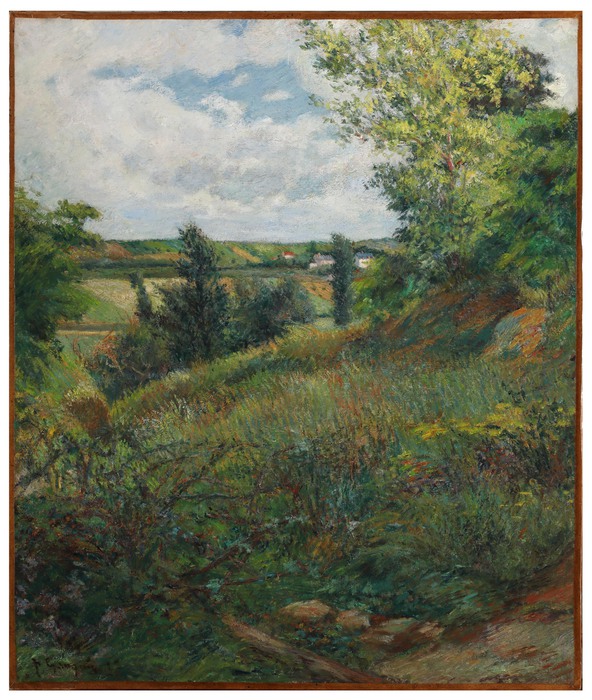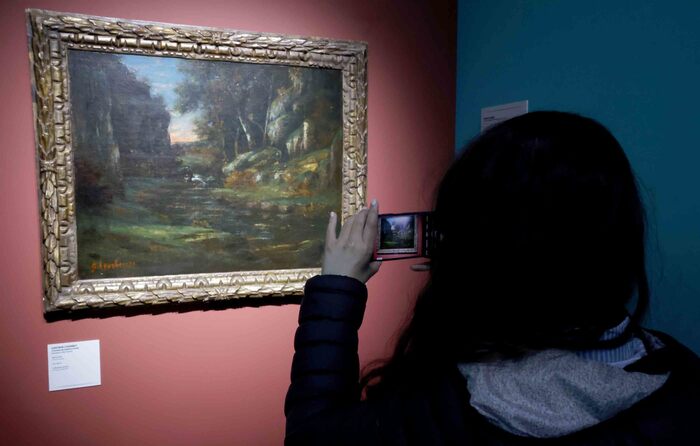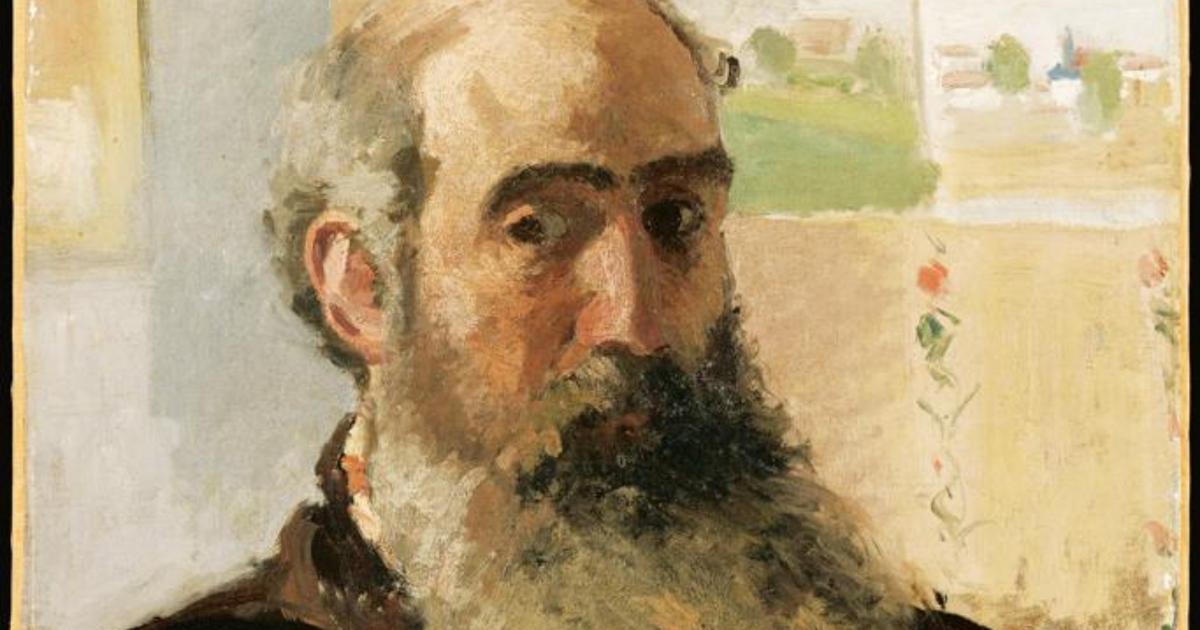ROME - A Gauguin with an extraordinary light shines in the center of Rome. The French painter was 34 years old when in 1882 he transferred his vision of the landscape around Pontoise, in the Val d 'Oise, north of Paris, to the canvas. "The path of Gratte Coqs", a splendid oil on canvas measuring 54x46 cm signed by the author on the lower left, is on display these days in the Galleria Russo, a stone's throw from Piazza di Spagna, in the heart of Rome. The painting returns to be admired by the public thirty years after the last exhibition, in 1986 in France at the Musée Départemental Du Prieuré of Saint-Germain. It is a precious work, an estimated value of two million euros, which will remain visible for a short period of time during the year-end festivities.
Paul Gauguin created that painting in the last of his three stays in Pontoise, hosted by Camille Pissarro, who had settled there for years, to whom he was bound by great friendship and esteem. Pissarro lived a short distance from the Gratte Coqs trail and chose him in turn to represent him on several occasions. Gauguin first went to Pontoise in 1878 in company, among others, of Paul Cezanne, and returned there the following year, when his works were exhibited at the Parisian Impressionist exhibition. "The living room of 1882 - explain the curators of the exhibition - coincides with the definitive choice of Gauguin to abandon the work in the bank and to devote himself exclusively to art and prelude to a series of transfers, Normandy, Brittany, Provence, which will totally determine the evolution of his style ''.
Although still strongly inspired by Impressionist suggestions, in the painting Gauguin preludes "to that intellectual vision of nature not reproduced photographically, but interpreted and recreated with accents that, in the more mature works, will become explicitly symbolist". The path of Gratte Coqs is considered, therefore, crucial in the life of Gauguin, the work of the turning point "which in its structure and in its compositional idea - it has been observed - is almost a watershed and contains the germs of Gauguin's successive years. His painting moves away from the simple optical and naturalistic dimension, representing the depth of the path in a space that seems to expand and compress at the same time with a dense chromatic draft of matter in the full Impressionist style ".
"This masterpiece - says Fabrizio Russo - has arrived in our gallery thanks to the relationship we have been feeding for years with a member of the Saudi royal family, no longer a customer but a friend, who after a visit to some of his very important works in Geneva there has given the assignment to follow the sale ". The answer was not long in coming. "Four international museums, European and American, have shown interest - notes Russo -. It is a real pity that Italian museums are not in a position to be able to imagine an acquisition of this kind. I trust, however, to be able to tickle the curiosity of some very important Italian collectors who are building memorable collections ". (HANDLE).
In Rome the first impressionist Gauguin
2019-12-16T11:02:05.214Z

A Gauguin with extraordinary light shines in the center of Rome. The French painter was 34 years old when in 1882 he transferred his vision of the landscape around Pontoise, in the Val d 'Oise, north of Paris, to the canvas. (HANDLE)








